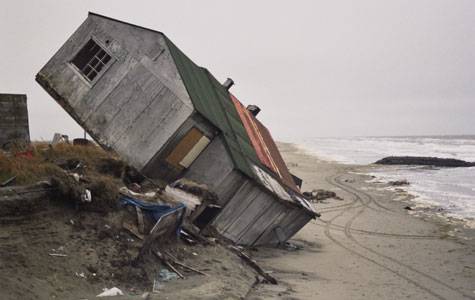Billy_Bob
Diamond Member
Dunno, how old do you think this house was?

Caprtion should read: Idiot fails to properly stabilize home due to sea wash of land from under it. Film at eleven..
This photo has NOTHING to do with permafrost melt but everything to do with stupidity and human error.





